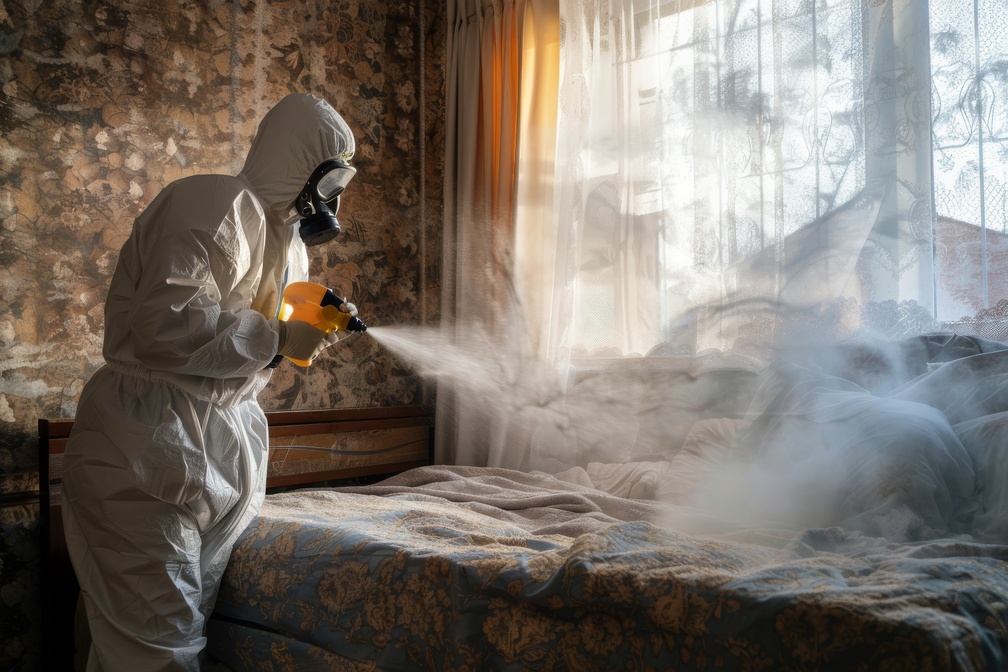Hazardous cleanup is a critical service aimed at managing situations where harmful materials pose risks to health and safety.
While some minor incidents can be handled without professional help, others require immediate attention from experts. Knowing when to call a professional cleanup service can make a significant difference in ensuring safety and compliance with regulations.
Read on to learn when calling a professional cleanup service is essential for maintaining safety and meeting regulations.
Situations That Warrant Professional Cleanup
Certain situations pose unique risks that are best handled by professionals with the right training and equipment.
That said, below are specific scenarios where expert assistance is often necessary to ensure a safe and thorough cleanup:
Biohazards
Biohazards include substances that carry the risk of infection or disease, such as blood, bodily fluids, and other biological materials. Cleanup in these cases requires specialized equipment and training to manage the potential for infection or contamination.
For example, in the unfortunate event of a violent crime or suicide, the need for a 24/7 Suicide Scene Cleanup service becomes essential. These professionals handle the cleanup with sensitivity, ensuring that all health risks are managed while also respecting the affected individuals and families.
Proper disposal of biohazardous materials is critical to prevent contamination and protect both the community and the environment.
Chemical spills
Chemical spills can occur in various environments, from industrial facilities to homes with common cleaning agents. When hazardous chemicals are released, they may pose an immediate threat to human health or the surrounding environment. Toxic substances like acids, solvents, or flammable liquids require careful handling and containment to prevent accidents and injuries.
Attempting to clean up without proper knowledge can exacerbate the risk. Professionals in chemical spill response are trained to neutralize and safely remove harmful chemicals, using protective gear and containment equipment to limit exposure and safeguard the area. Their expertise ensures that the cleanup is thorough and in line with safety regulations.
Environmental hazards
Environmental hazards arise when pollutants, chemicals, or other dangerous materials contaminate natural resources such as soil, water, or air. This contamination might occur from industrial accidents, chemical spills, or improper waste disposal. For example, when hazardous materials seep into the soil or a body of water, they can pose long-term health risks to the surrounding community and ecosystem.
Professionals skilled in environmental remediation assess the situation, determine the extent of contamination, and follow specific protocols to clean and restore the affected area. They use advanced techniques to prevent the spread of contaminants, ensuring that the environment is protected from further damage.
Unattended deaths
In cases of unattended deaths, the environment can quickly become hazardous due to the natural process of decomposition, which may involve biohazardous materials. Cleanup in these situations requires a respectful and thorough approach, as the presence of bodily fluids and other biological materials can pose health risks.
Professionals trained in this field use specialized equipment and follow strict safety protocols to remove all biohazardous material safely. Beyond the technical cleanup, they approach these situations with discretion and compassion, recognizing the sensitive nature of the circumstances. Their expertise ensures that the space is restored safely, allowing those affected to focus on healing.
Hoarding situations
Hoarding can create significant health and safety risks, from accumulated waste to biohazardous conditions caused by decaying materials. Homes affected by hoarding often contain blocked exits, fire hazards, and potential structural damage due to the weight and volume of items stored.
The clutter can also hide mold, pests, and biohazards, making the environment unsafe. Professional cleanup teams trained in hoarding situations know how to assess and address these complex hazards safely and systematically. They work with compassion and respect for the individuals involved, helping to restore the space safely while prioritizing the well-being and dignity of the homeowner.
Each of these scenarios illustrates the importance of professional intervention for hazardous cleanup situations. Professionals bring specialized knowledge, equipment, and protocols to ensure that health risks are minimized, the environment is protected, and those involved receive the support they need.

Factors to Consider
When deciding how to handle a hazardous cleanup, carefully weighing certain factors can help ensure safety and effectiveness.
Below are key considerations to keep in mind when evaluating the need for professional cleanup services:
Severity of the hazard
Assess the severity of the hazard involved. If the situation poses an immediate risk to health or safety, seeking professional assistance is crucial. For example, chemical spills or biohazardous materials require immediate attention, as delays can worsen the situation.
Health risks
Evaluate the potential health risks associated with the hazardous material. Exposure to toxic substances can lead to serious health complications, so understanding these risks is essential. In cases involving biohazardous materials, the potential for infection or disease transmission heightens the urgency of professional cleanup.
Regulatory compliance
Cleanup operations must comply with local, state, and federal regulations. Professionals are familiar with these regulations and ensure that all cleanup procedures are in line with legal requirements. Failure to adhere to these guidelines can result in legal ramifications, making it essential to engage experts.
Your own safety
Personal safety should be a priority during any hazardous cleanup. If you lack the proper training, equipment, or knowledge, attempting to handle the situation yourself can lead to accidents or health risks. Professionals are trained to navigate these dangerous environments safely. Their expertise and equipment significantly reduce the risk of harm.
In all hazardous cleanup situations, considering these factors helps ensure a safe, thorough, and compliant process.
Final Thoughts
Understanding when to call a professional for hazardous cleanup is vital for ensuring safety and compliance. If you find yourself facing hazardous materials, don’t hesitate to reach out to experts who specialize in this field. Their knowledge and experience will provide peace of mind during challenging times.






